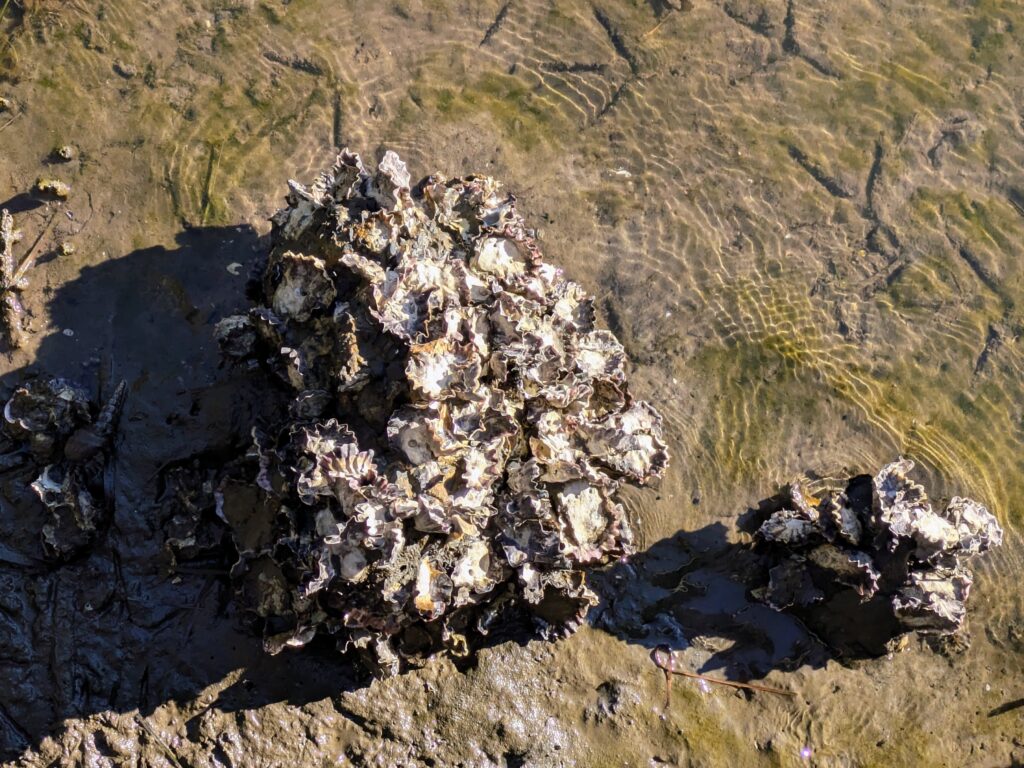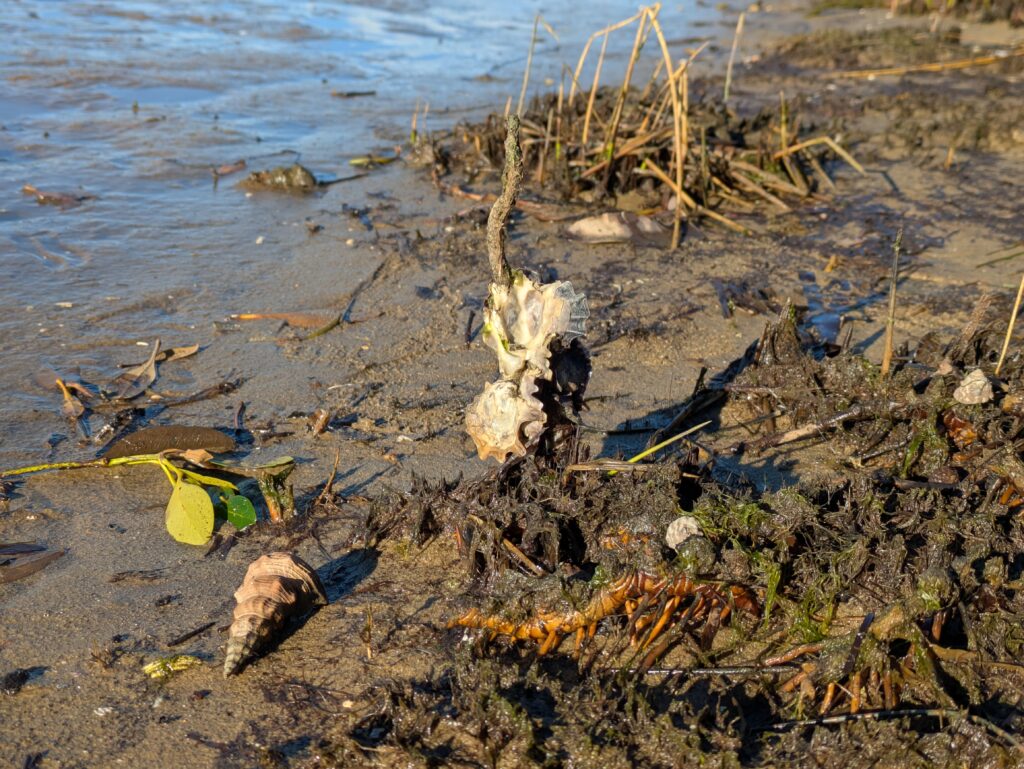When we think about reefs, many of us picture colourful corals and tropical fish. But closer to home, along Australia’s coastlines, lies another kind of reef, one built by oysters. These oysters reefs were once common across our estuaries and bays, creating thriving underwater cities that supported marine life, filtered water, and protected shorelines. Today, oyster reefs are one of the most threatened marine habitats on Earth, but exciting restoration projects are bringing them back to life.


Why are Oyster Reefs Important?
Oyster reefs are true ecosystem engineers. They provide a wide range of benefits, both for marine environments and people.
- Biodiversity hotspots – Oyster reefs create shelter and feeding grounds for fish, crabs, prawns, and countless other species. Healthy reefs support rich food webs and increase fish stocks.
- Water cleaners – A single oyster can filter litres of water every day, removing excess nutrients, sediment, and pollutants. Reefs act like natural water treatment plants, improving the health of coastal ecosystems.
- Coastal protection – Oyster reefs help reduce wave energy and stabilise shorelines, making them a natural defence against erosion and storm surges.
- Cultural and community value – Oysters have been an important food source for Aboriginal communities for thousands of years, leaving behind ancient middens as evidence of this deep cultural connection.

The Decline of Oyster Reefs
Unfortunately, oyster reefs are now listed as a critically endangered habitat. Overharvesting, pollution, dredging, and changes to coastal waterways caused reefs to collapse across much of Australia by the early 20th century. In some regions, over 90% of oyster reefs were lost, making them one of the most degraded marine ecosystems worldwide.
Bringing Oyster Reefs Back
The good news is that restoration efforts are making a difference. Around Australia, communities, researchers, and environmental organisations are working together to rebuild reefs. These projects involve placing recycled shells, limestone, or other hard surfaces on the seabed to provide a base where young oysters can settle and grow. Over time, these structures develop into thriving reefs once again.
Programs like the Oyster Reef Restoration Project and community-led initiatives are not only helping to restore lost ecosystems but also engaging volunteers, fishers, and schools in hands-on conservation.
How You Can Help
Everyone can play a role in oyster reef restoration:
- Support local projects through volunteering or citizen science.
- Choose sustainably farmed oysters, which can reduce pressure on wild populations.
- Reduce pollution by limiting single-use plastics and correctly disposing of waste to keep waterways clean.
- Share knowledge – talk to your community about the importance of oyster reefs and why restoring them matters.
A Future with Living Reefs
Restoring oyster reefs is about more than bringing back a lost habitat. It’s about creating healthier oceans, stronger coastlines, and sustainable fisheries for future generations. By working together, we can help oyster reefs thrive again and rediscover one of nature’s hidden treasures.

